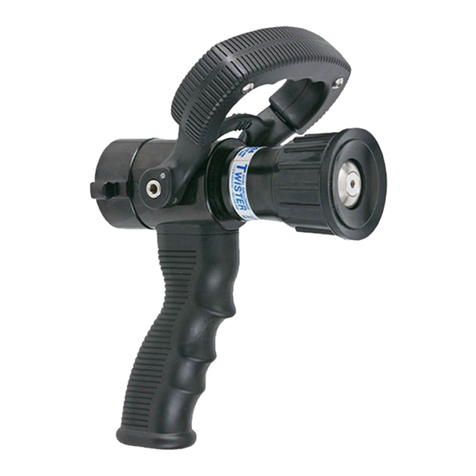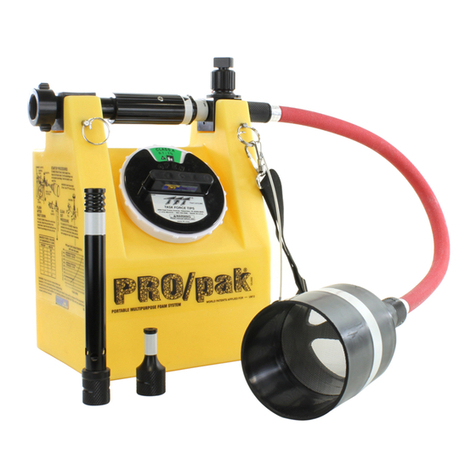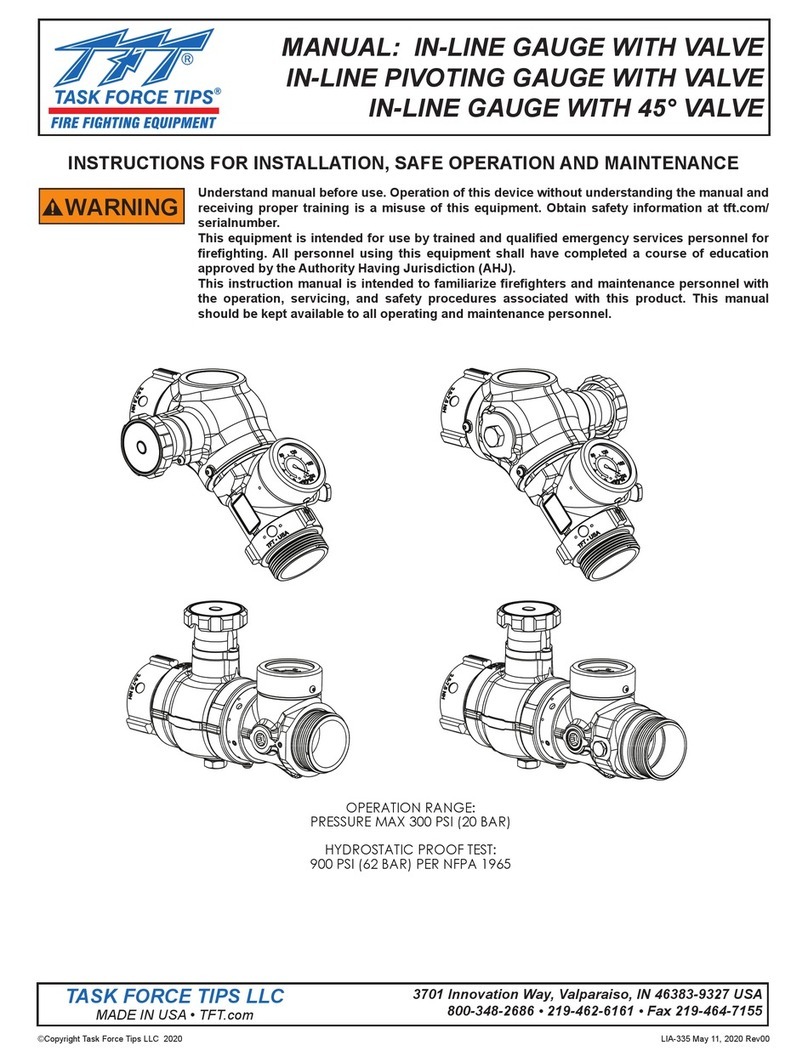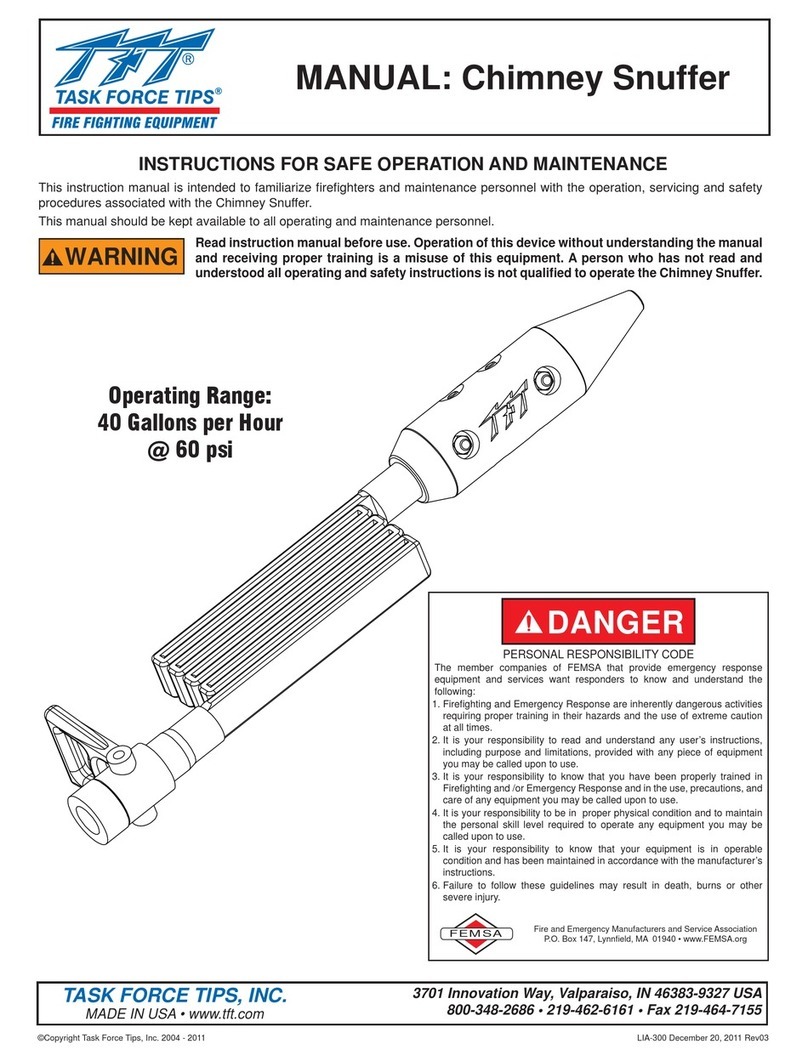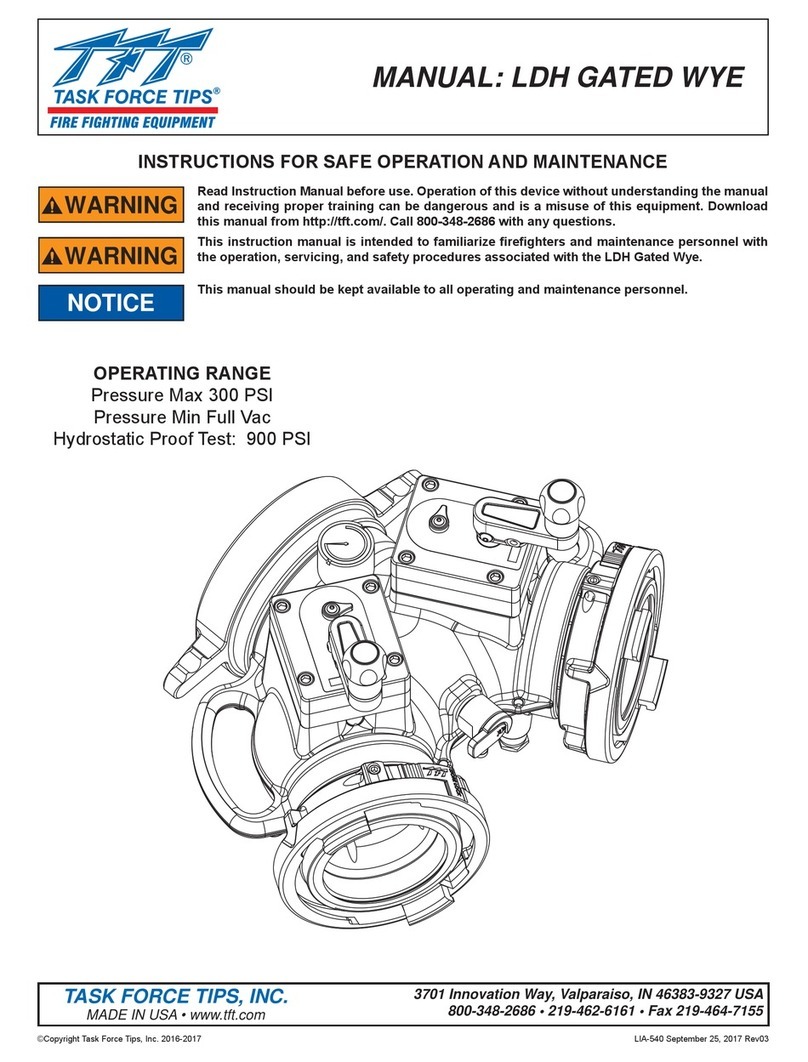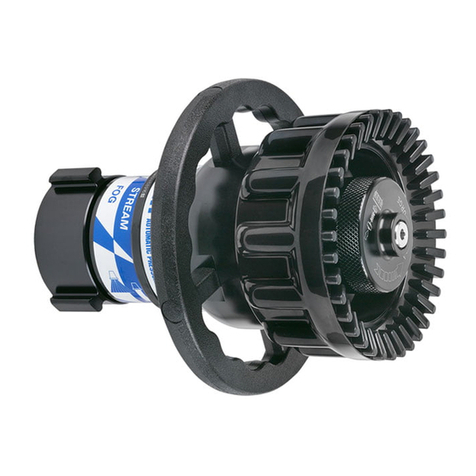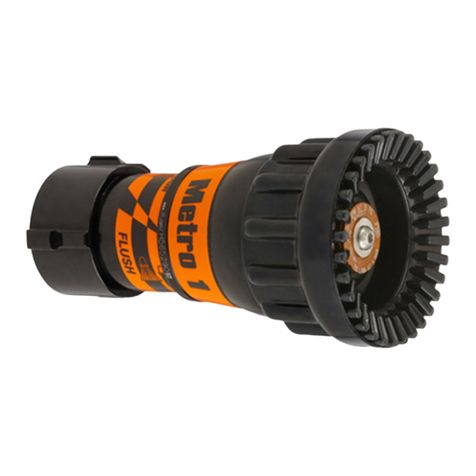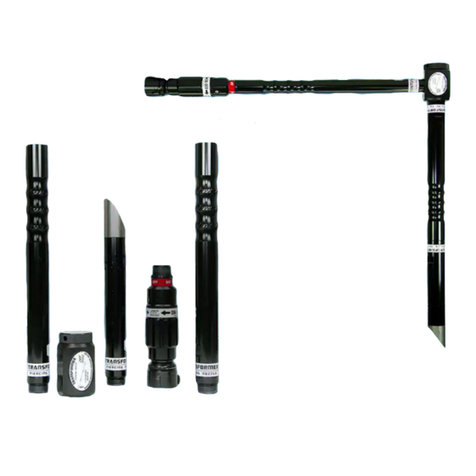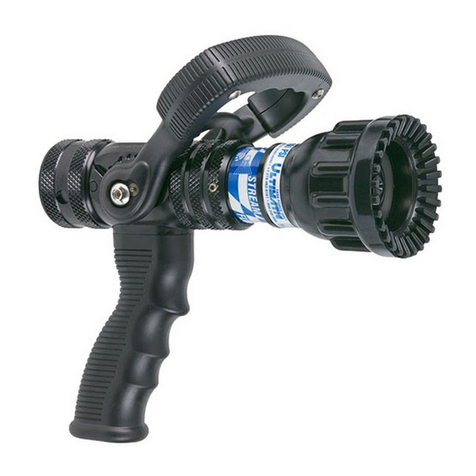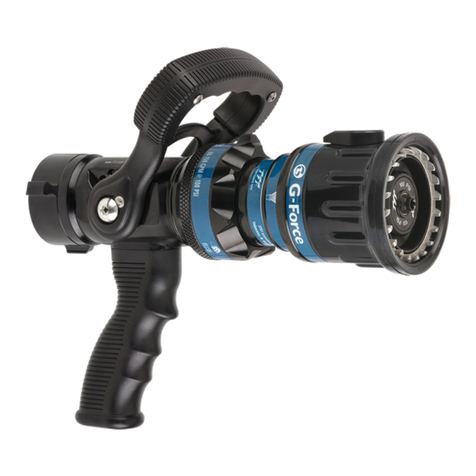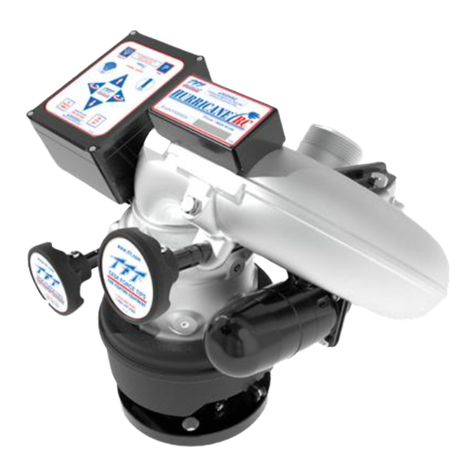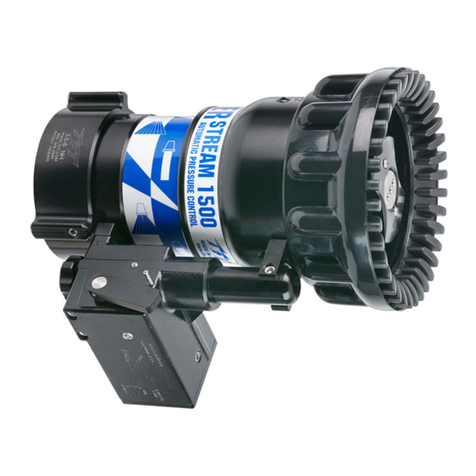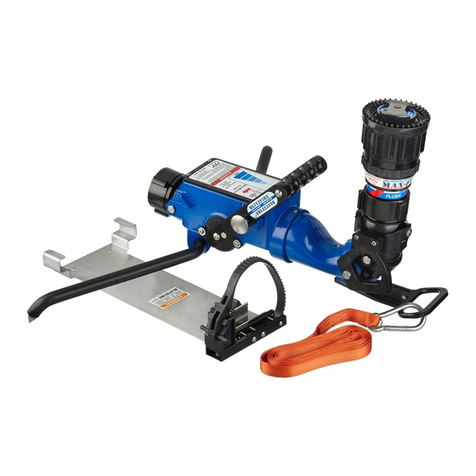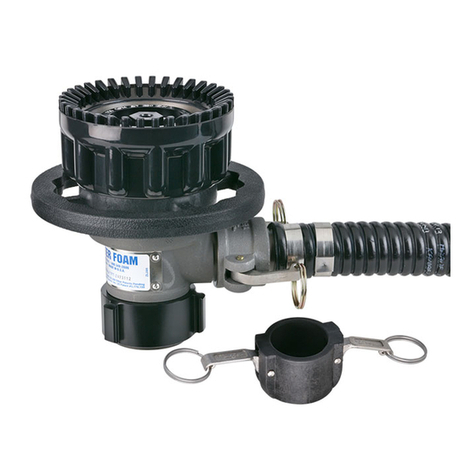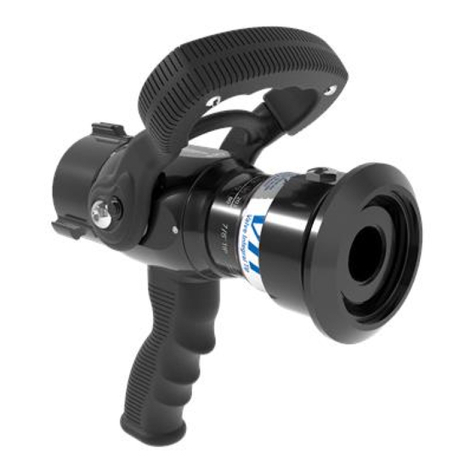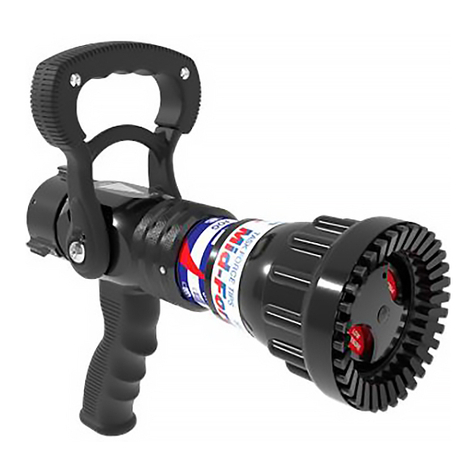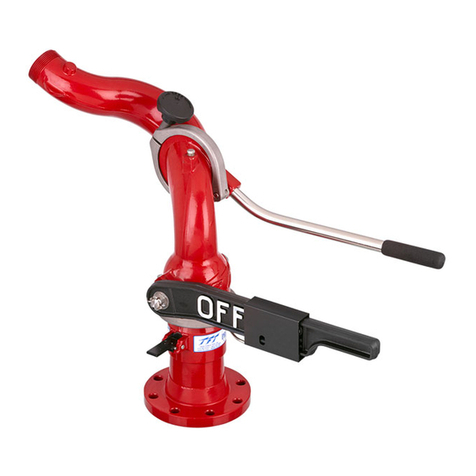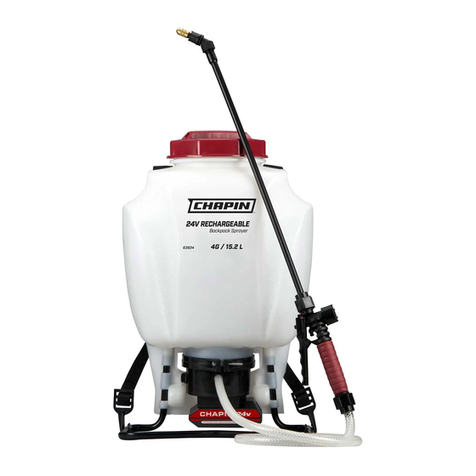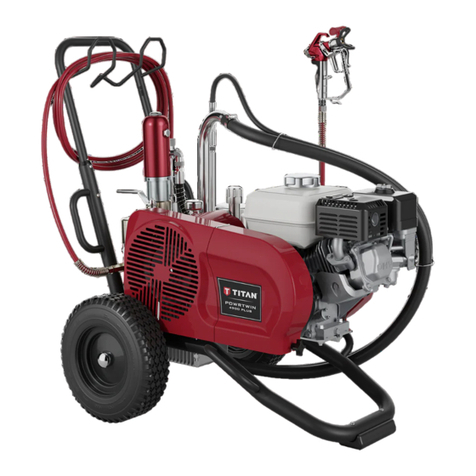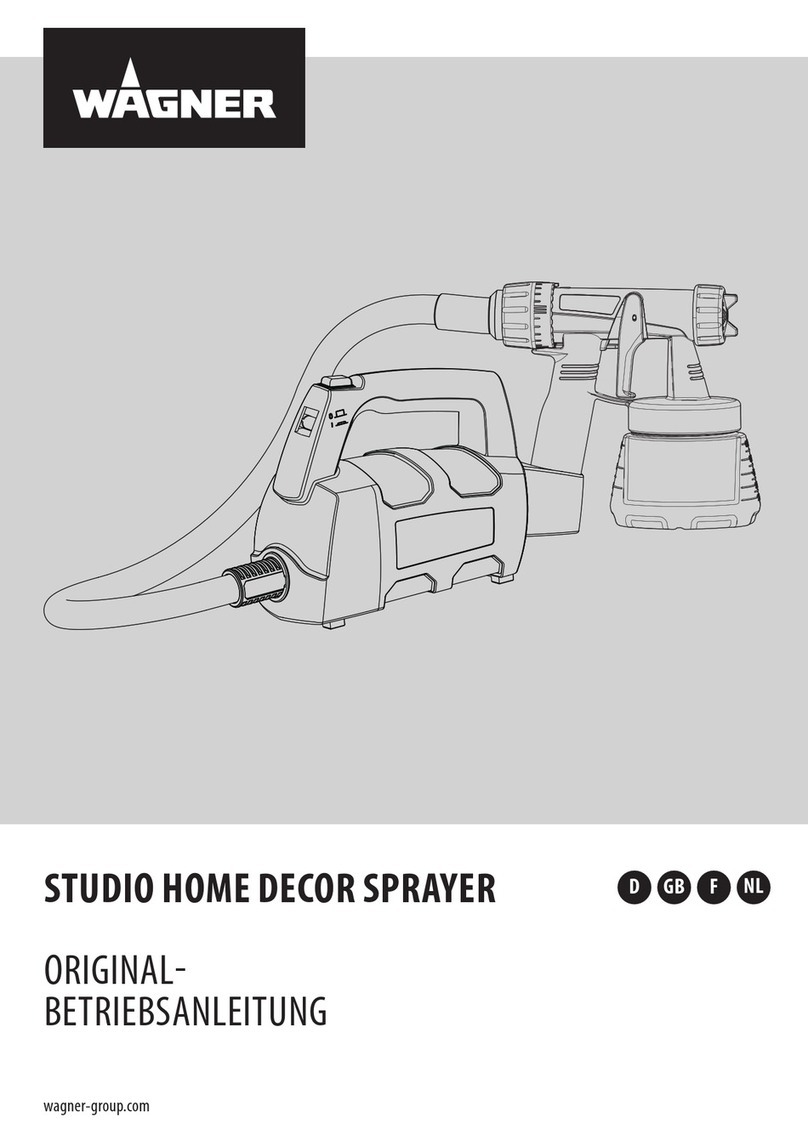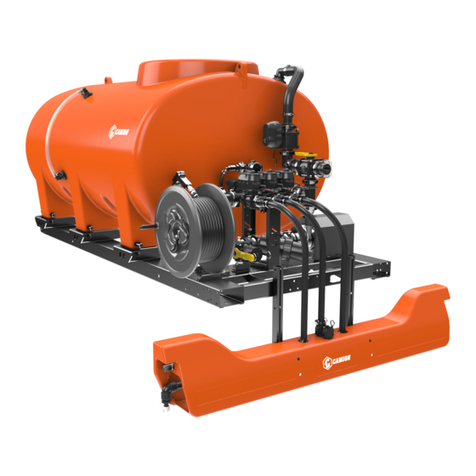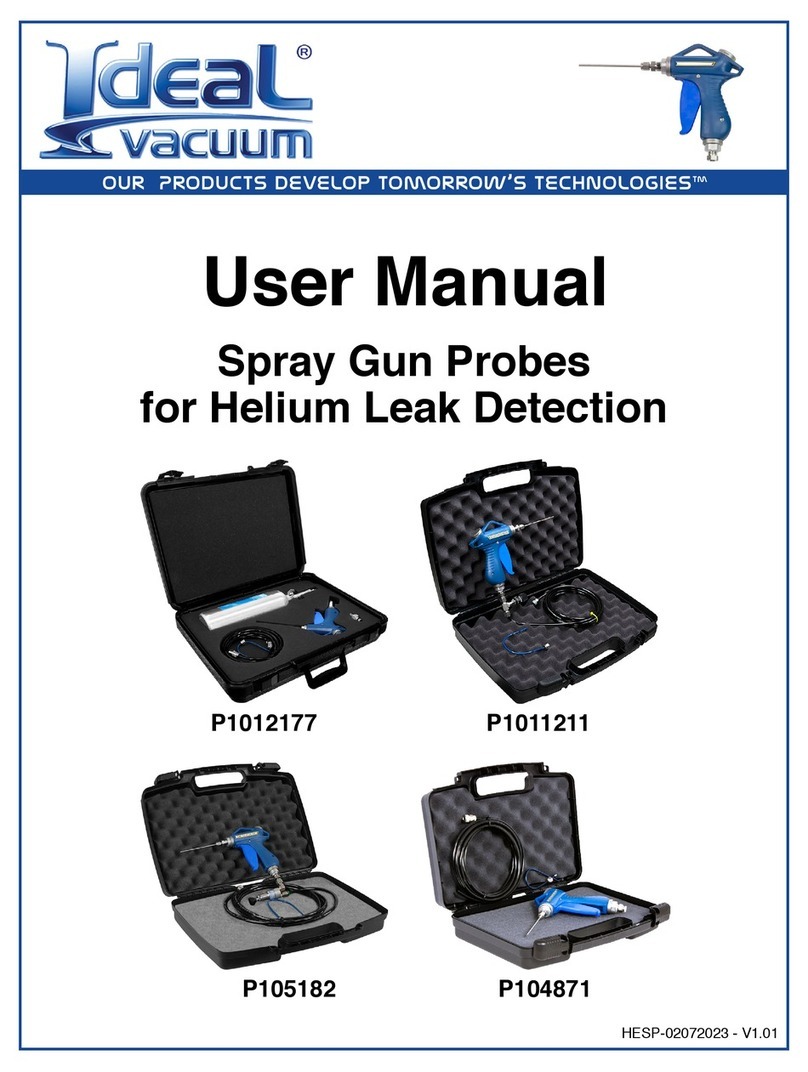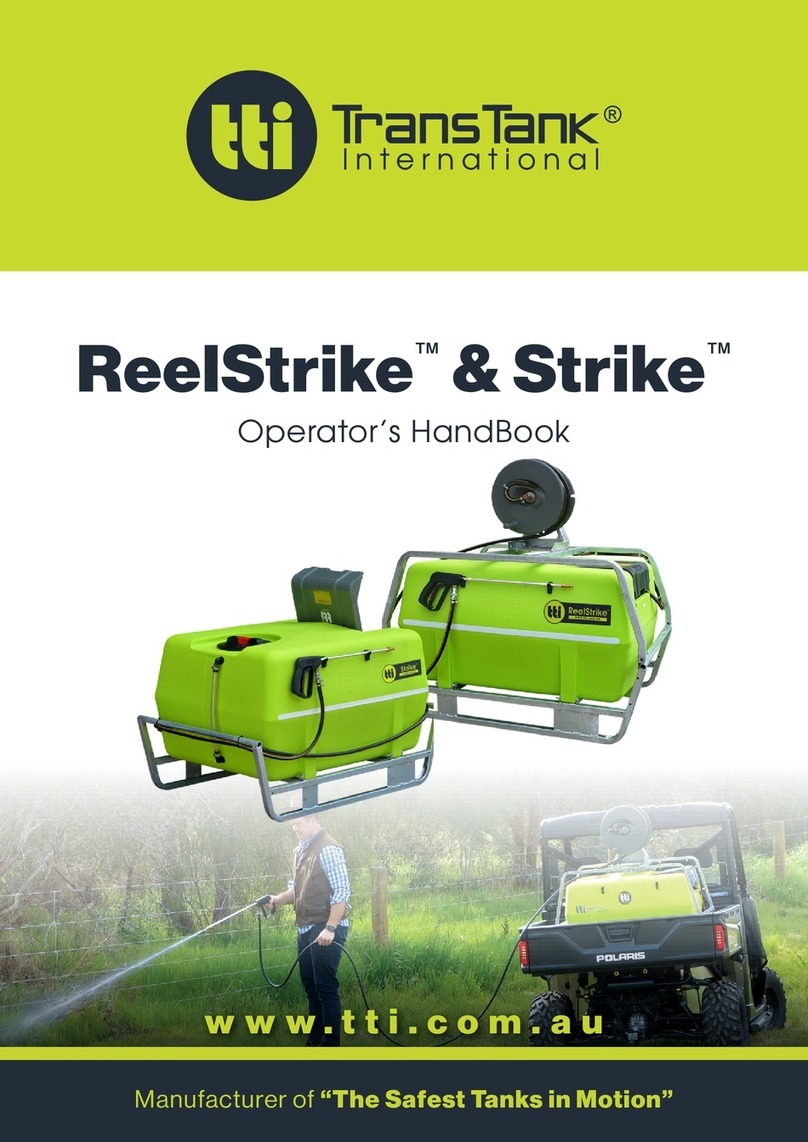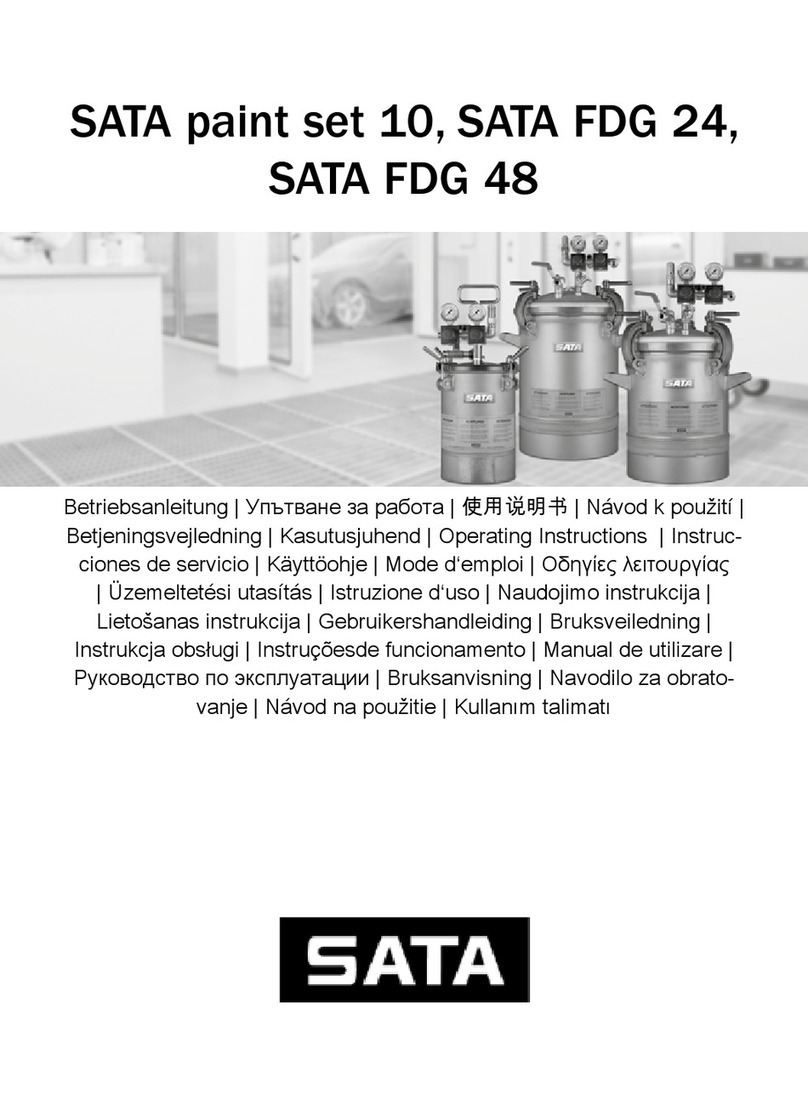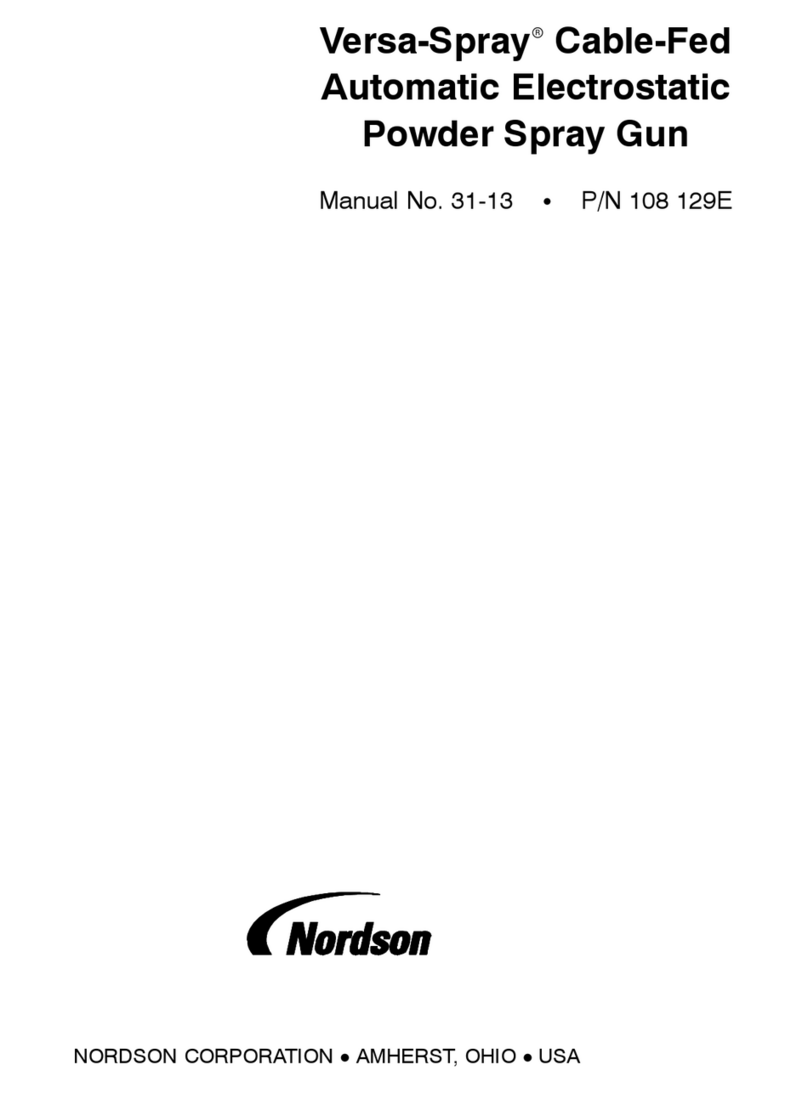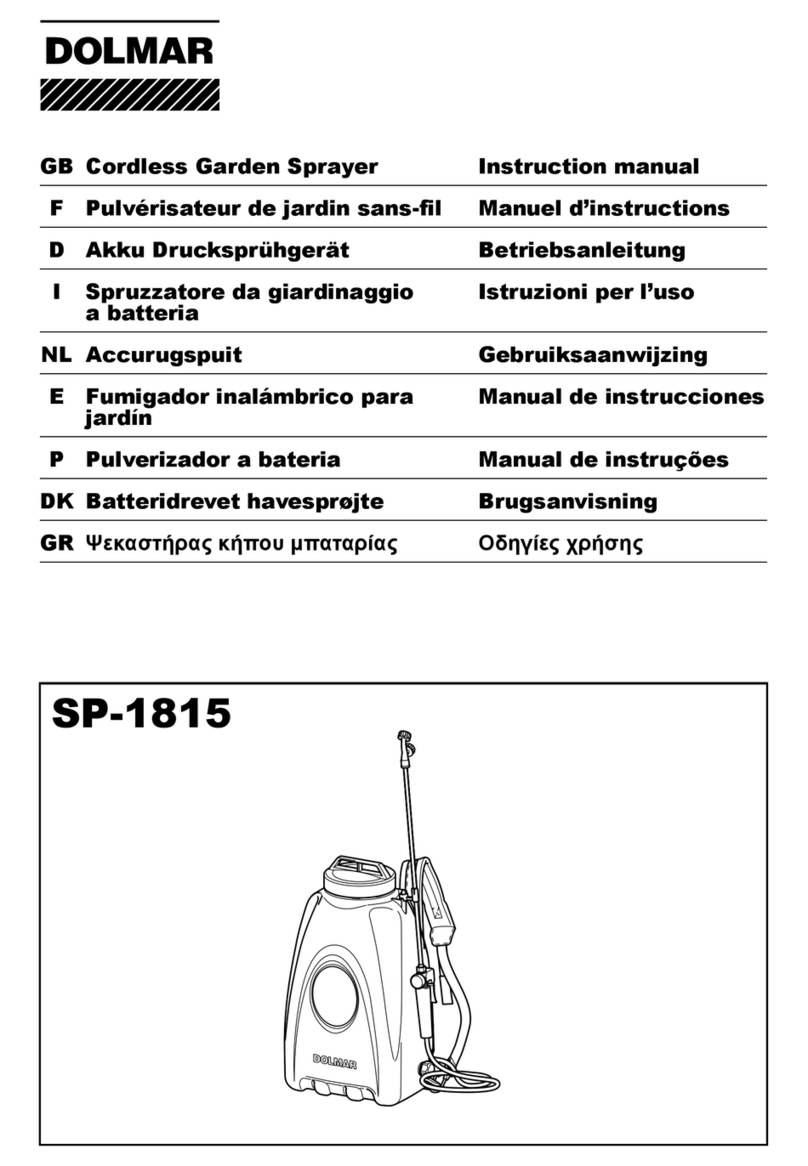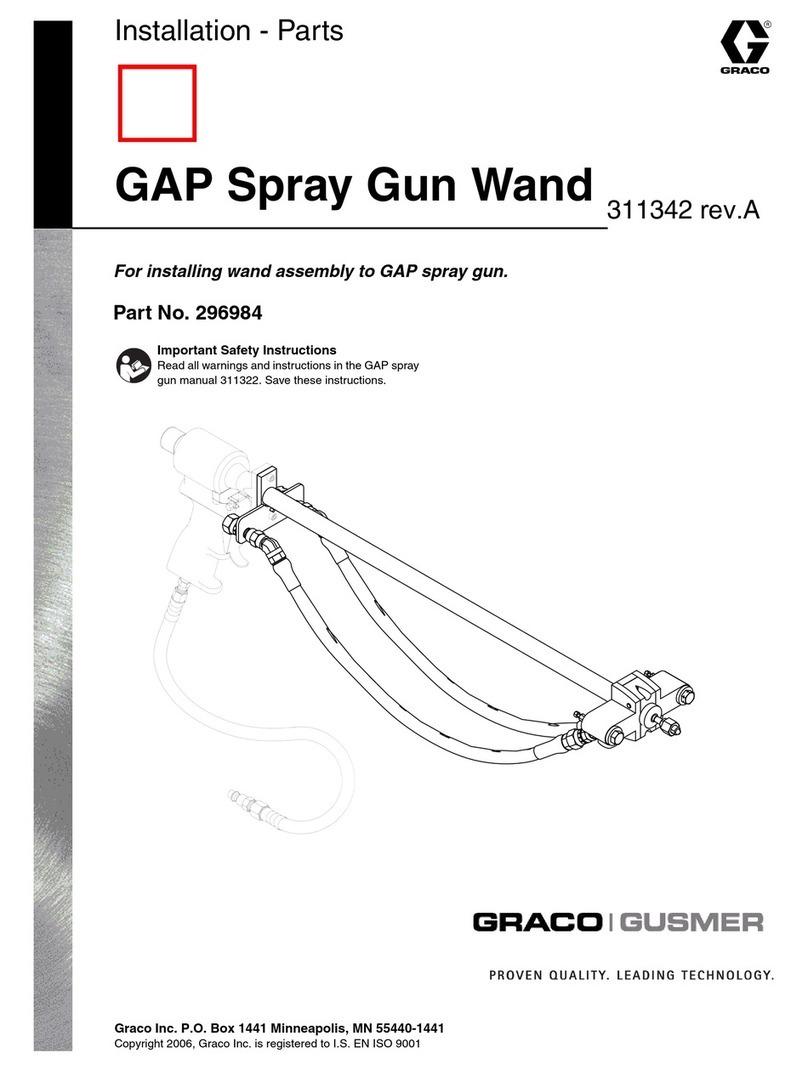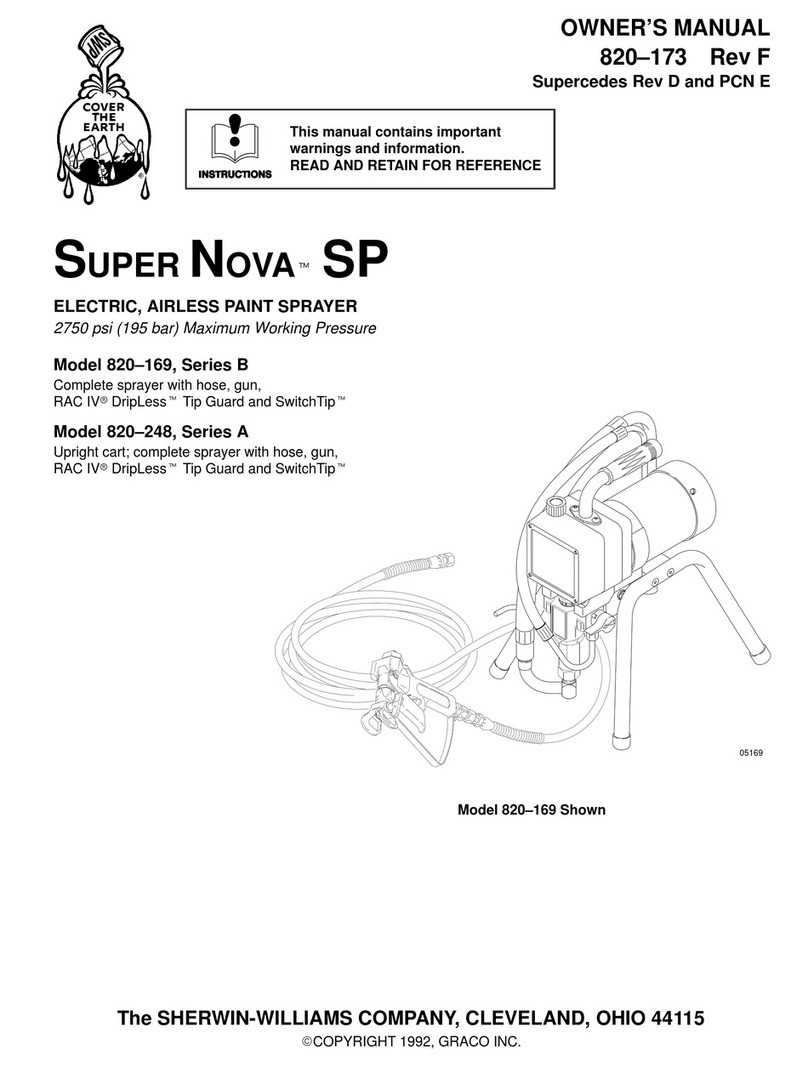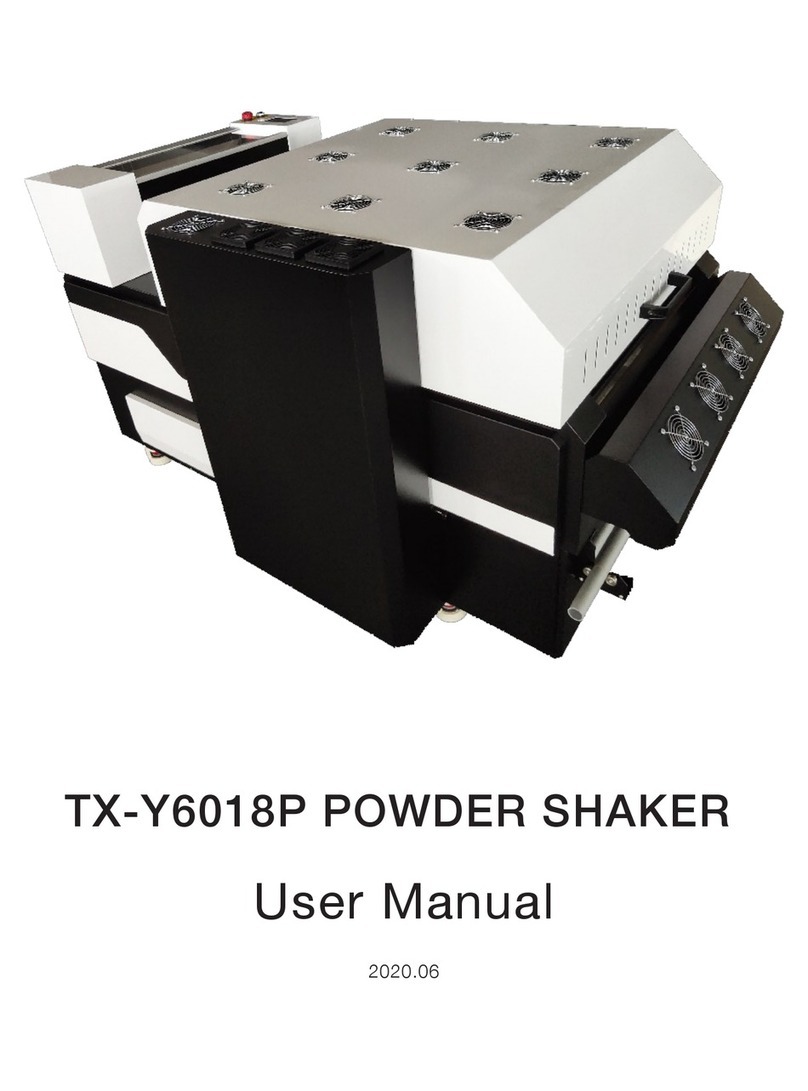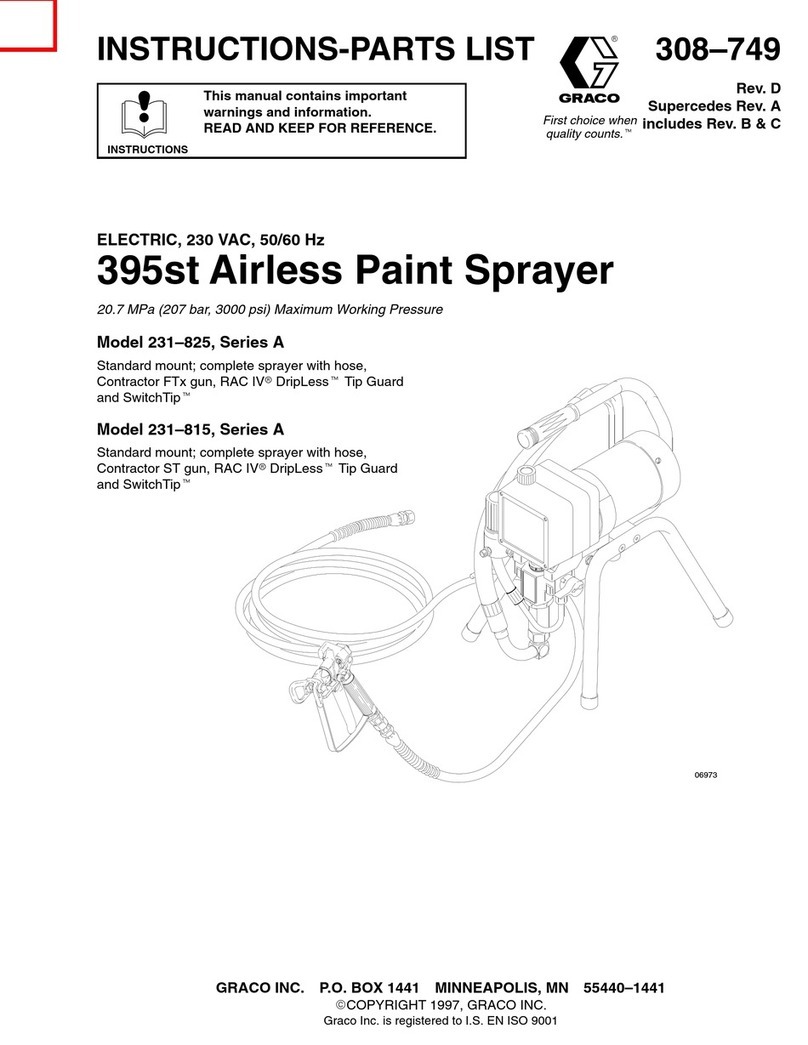
©Copyright Task Force Tips, Inc. 2015 LIM-045 September 15, 2015 Rev00
3
1.0 MEANING OF SAFETY SIGNAL WORDS
Asafety related message is identified by a safety alert symbol and a signal word to indicate the level of risk involved with a particular
hazard. Per ANSI standard Z535.4-2011, the definitions of the four signal words are as follows:
DANGER DANGER indicates a hazardous situation which, if not avoided, will result in death or serious
injury.
WARNING WARNING indicates a hazardous situation which, if not avoided, could result in death or serious
injury.
CAUTION CAUTION indicates a potentially hazardous situation which, if not avoided, could result in minor
or moderate injury.
NOTICE NOTICE is used to address practices not related to physical injury.
2.0 SAFETY
OPERATING NOTEABOUTAUTOMATIC NOZZLES: The automatic nozzle is considerably different than Fixed and Selectable Flow
nozzles because of basic changes in the operating principle. These differences not only assure the most effective operation under
a variety of conditions, but will also utilize the available water supply most efficiently. It is important that nozzle operators, pump
operators, and officers be fully aware of these differences. Therefore, proper instruction is required for safe and effective operations.
DANGER An inadequate supply of nozzle pressure and/or flow will cause an ineffective stream and can
result in injury, death, or loss of property. See flow graphs or call 800-348-2686 for assistance.
WARNING This equipment is intended for use by trained personnel for firefighting. Their use for other
purposes may involve hazards not addressed by this manual. Seek appropriate guidance and
training to reduce risk of injury.
WARNING WARNING Injury can result from an inadequately supported monitor. The monitor mount must be
capable of supporting 931 lbs (422 kg) of nozzle reaction force.
WARNING Some volatile liquids can be ignited by static discharge.
Static build-up can occur from:
• Electrochemical separation of charge as water drains through low conductivity, refined
products.
• Applying foam over a low conductivity liquid of sufficient depth to retain the charge created
as the foam blanket drains.
• Streaming currents as water or foam is introduced into the storage tank.1
WARNING Water is a conductor of electricity. Application of water solutions on high voltage equipment can
cause injury or death by electrocution. The amount of current that may be carried back to the
nozzle will depend on the following factors:
• Voltage of the line or equipment
• Distance from the nozzle to the line or equipment
• Size of the stream
• Whether the stream is solid or broken
• Purity of the water2
WARNING The stream exiting a nozzle is very powerful and capable of causing injury and property damage.
Make sure the nozzle is securely attached and pointing in a safe direction before water is turned
on. Use care in directing the stream.
WARNING The nozzle may be damaged if frozen while containing significant amounts of water. Such damage
may be difficult to detect visually and can lead to possible injury or death. Any time the nozzle is
subject to possible damage due to freezing, it must be tested by qualified personnel before being
considered safe for use.
CAUTION Nozzle must be properly connected. Mismatched or damaged threads may cause nozzle to leak or
uncouple under pressure and could cause injury.
CAUTION Do not connect aluminum to brass or brass to aluminum. Dissimilar metals coupled together
can cause galvanic corrosion that will freeze the threaded joint or cause complete loss of thread
engagement. If dissimilar metals must be coupled together, the effects of corrosion can be greatly
delayed by various coatings on the metal such as powder paint, hard anodizing, or silicone grease.
NOTICE To prevent mechanical damage, do not drop or throw equipment.
1 Electrostatic Hazards of Foam Blanketing Operations by Peter Howels. Industrial Fire Safety July/August 1993
2 The Fire Fighter and Electrical Equipment, The University of Michigan Extension Service, Fourth Printing 1983. Page 47.
















